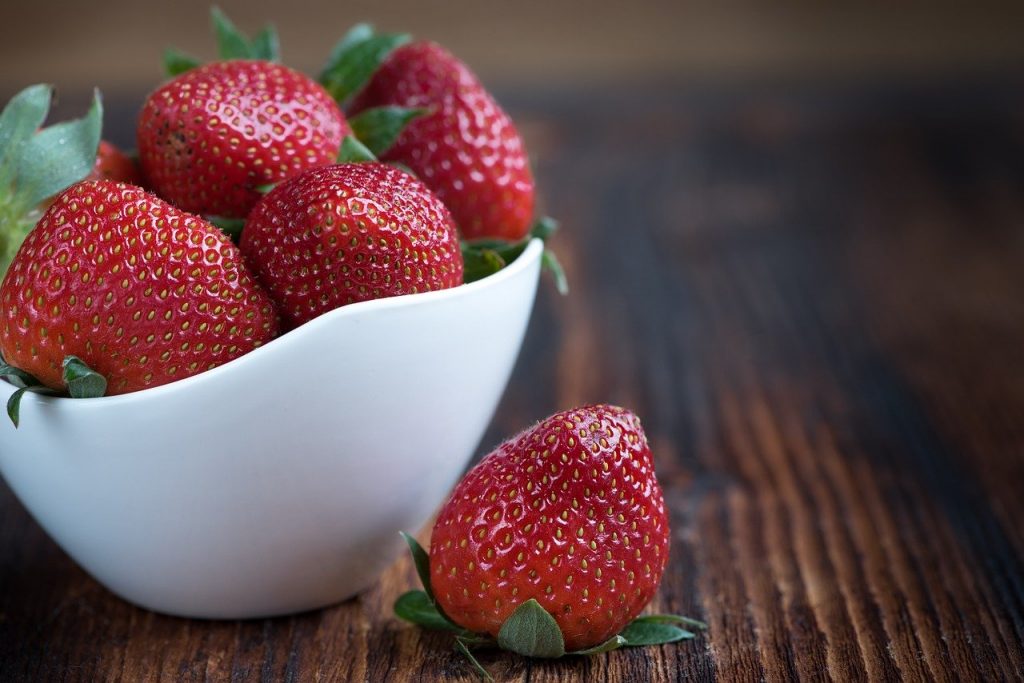[Article updated on 19/09/2023]
Red fruits are often associated with gluttony and the tangy taste associated with them. Plain, frozen, in crumble, pastry, compote or jam… fruity, juicy and full of vitamins!
Strawberry, cherry, raspberry, blackberry, redcurrant, blueberry, cranberry, black elderberry, sloe…
Don’t resist! Red fruits are very good for your health and your figure!
The nutritional qualities and health benefits of red fruits
Low caloric intake (around 50 kcal per 100g), high antioxidant and potassium power, make it a tangy and slightly sweet dessert of choice!
They contain a low amount of fat and carbohydrates (in the form of fructose except for cherries!)
Attention !!! Cherries should be limited to one to large handful per day, because their carbohydrates are not fructose but glucose (sugar pure).
The red fruits are rich in fiber, in vitamin A, C and B6 which are essential to our body and to the fight against certain diseases. Also rich in potassium, phosphorus, magnesium and a little calcium.
To keep the benefit of your low energy intake, you must of course not drown them in icing sugar or whipped cream!
Red fruits have strong antioxidant power and are among the 20 plants containing the most. Hence the interest, in peak season, of consuming two to three portions per day to combat the harmful effects of free radicals on the body.
Red fruits provide potassium: red berries contain 5 to 20% of the recommended daily intake of this mineral, which is essential to fight against hypertension, cramps, fatigue, cellulite, etc.
Red fruits throughout the seasons
Red fruits of spring
There strawberry appears on the shelves in March. Depending on its origin and its method of cultivation, it will have more or less flavor. In May, the sweet, sun-drenched Gariguettes arrive!
You will taste raw fruits as they are but also in tarts, sorbets, jams, syrups, coulis…
The cherry arrive in May-June with the Burlat, the Griottes… The first are made into clafoutis, the others are eaten fresh or in jam.
There raspberry from June to September. It is eaten fresh, but also freezes very well. You will make tarts, jams and coulis to accompany your dairy products.
Virtues: Raspberry polyphenols have a significant anti-inflammatory action, which would reduce the risk of certain diseases (diabetes, obesity).

Red fruits of summer
There currant are harvested from the end of June until the end of August.
It is eaten raw (sour), decorated on plates, in jelly, coulis but it also freezes very well. You can prepare the delicious jam with four red fruits: strawberries, cherries, raspberries and redcurrants!
Virtues: promotes good intestinal transit because it is one of the fruits richest in fiber (8 g per 100 g), natural remedy against constipation problems. Be careful, if diverticula are present, it is preferable to remove the seeds.
THE Cassis is collected in July. It is eaten fresh, in jelly, sorbets, pies and coulis.
Virtues: energizes the body with 200 mg of vitamin C per 100 g, the richest fruit. One serving covers 100% of the recommended daily intake of 110 mg. Vitamin C promotes the proper functioning of the immune system, and helps reduce physical fatigue.
There blackberry is harvested from July to September. You can enjoy them raw or make jelly, sorbets or blackberry syrup.
Virtues: protects against cardiovascular diseases because it contains flavonoids and phytosterols. Powerful antioxidants and limit the absorption of cholesterol and reduce it by around 10%, provided you have a balanced diet. It makes the blood vessels more toned.
L’lingonberry and the cranberry is harvested from July to August. It is eaten fresh and freezes very easily.
Virtues: Limits urinary infections by preventing bacteria from attaching to the wall of the bladder.
The red fruits of autumn
There blueberry is collected from July to the end of September. It is found in mid-mountains in Ardèche, Auvergne and the Vosges. You can cook it into tarts, jams, sorbets… or enjoy it fresh.
Virtues: helps maintain good night vision by stimulating retinal pigment and prevents memory loss, fights the aging of the body thanks to its content of 20 antioxidants, which gives it anti-aging properties, by protecting collagen and allows you to have more toned skin. It is recommended to take 150 g of blueberries per day.
There black elderberry is found from August to September. It is eaten in jelly but not eaten raw because they are very purgative.
There sloe are picked in the fall. Sloes are not eaten raw, however, they make delicious liqueurs.
Be careful, you should avoid red fruits in certain situations
- No blueberries if you are breastfeeding because it slows down lactation. On the other hand, it can be useful during weaning!
- Watch out for the raspberries, like strawberry, kiwi, pear: contains histamine which can cause redness, itching, headaches, bloating, etc.
Some tips for consuming red berries properly
- Quickly deseed the currants: hold the bunch by one end, pass the stem between the tines of a fork and gently pull on it to remove the currants without damaging them.
- Freezing blackcurrants: so that the blackcurrants can keep their strength when frozen, simply add a tablespoon of lemon juice to the bag accompanied by a little bit of sugar.
- Wash blackberries and strawberries picked in the woods: essential if they are blackberries picked at the side of the roads. They may have been soiled by animal droppings and carry the larva of the Echinococcus tapeworm, the cause of hydatidosis.
For fresh, colorful and vitamin-filled desserts, think of red fruits, They are your line and health allies!
